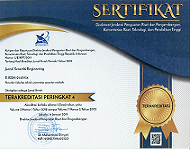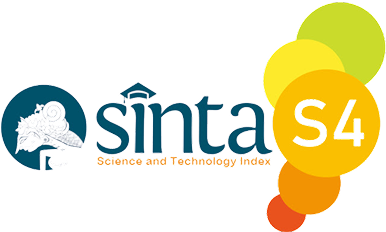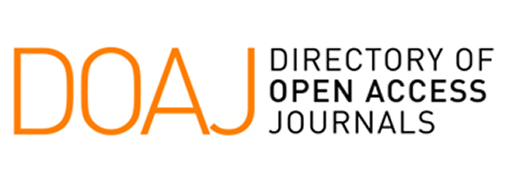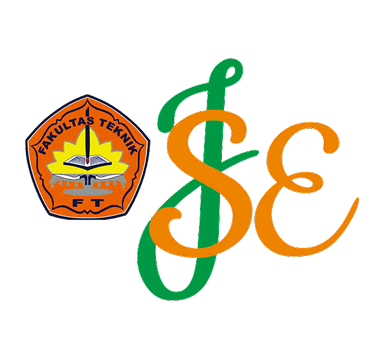Efektivitas Unit Clarifier, Filtrasi, Desifeksi dan Reservoir di Instalasi Pengolahan Air ( IPA ) 2 Krian
Keywords:
Clarifier, Filtrasi, Desinfeksi, reservoir, IPA 2 KrianAbstract
The Water Treatment Plant (WTP) 2 Krian plays a vital role in ensuring the quality of drinking water that meets health standards. This study aims to evaluate the effectiveness of the clarifier, filtration, disinfection and reservoir units in reducing raw water turbidity. A quantitative method was employed through direct field measurements using a turbidity meter, focusing on turbidity removal percentages (% removal) over the period of May 22–28, 2025. The results showed that the clarifier unit consistently achieved high turbidity removal efficiency, ranging from 97.72% to 98.72%. The filtration unit also demonstrated stable performance, with turbidity removal percentages between 59.65% and 72.41%. The final turbidity values were below 3 NTU, in complied with Indonesian Ministry of Health Regulation No. 2 of 2023. Collectively, the four units functioned effectively to support safe and potable water treatment. This evaluation serves as a critical basis for maintaining and improving the performance of the WTP to ensure sustainable clean water supply.
References
[1] I. D. A. Hendrasarie, N & Swandika, “Resistance of Loading Loads in Surabaya River and Its Branch with Qual2KW Model,” J. Phys. Conf. Ser., vol. 1569, no. 4, 2020, doi: 10.1088/1742-6596/1569/4/042096.
[2] R. K. H. Ajiputra, Farhan. Athallah., Hendrasarie, Novirina., & Putro, “Kombinasi Green Coagulant dan Adsorben GAC (Granular Activated Carbon) Sebagai Pengolahan Limbah Cair Batik,” J. Serambi Eng., vol. 7, no. 4, pp. 3733–3740, 2022, doi: 10.32672/jse.v7i4.4726.
[3] & E. B. O. Okafor, Collins. Onyebuchi., Ude, Ibiam. Ude., Okoh, Felicia Ngozi., “Safe Drinking Water: The Need and Challenges in Developing Countries,” Intech, p. 13, 2012, [Online]. Available: http://dx.doi.org/10.1039/C7RA00172J%0Ahttps://www.intechopen.com/books/advanced-biometric-technologies/liveness-detection-in-biometrics%0Ahttp://dx.doi.org/10.1016/j.colsurfa.2011.12.014
[4] V. F. Yogafanny, Ekha., Anasstasia, Titi. Tiara., & Utama, “Effectiveness of Turbidity Removal by Direct Filtration,” Yogyakarta Conf. Ser. Proceeding Eng. Sci. Ser., vol. 1, no. 1, pp. 552–561, 2020, doi: 10.31098/ess.v1i1.150.
[5] A. Putri, Nara. Naomi. Aprilia., & Aussie, “Analisis Kinerja dan Evaluasi Unit Clearator dan Clarifier di PDAM Surya Sembada Surabaya,” J. TESLINK Tek. Sipil dan Lingkung., vol. 6, no. 1, pp. 62–68, 2024, doi: 10.52005/teslink.v6i1.318.
[6] A. Rahmawati, Rizkita & Amalia, “Perbandingan Efektivitas Unit Filtrasi Pada Instalasi Pengolahan Air Unit III dan IV Legundi Gresik,” vol. 6, no. 2, pp. 397–407, 2024.
[7] N. Dienullah, R. Mohammad. Alghaf & Hendrasarie, “Pengaruh Bentuk Impeller pada Proses Koagulasi-Flokulasi dalam Mengolah Limbah Industri Batik Organik,” ESEC Tek. Lingkung., vol. 2, no. 1, pp. 93–102, 2021, [Online]. Available: https://esec.upnvjt.com/index.php/prosiding/article/view/78/88
[8] I. Anhar., Dewi, Erwana., & Purnamasari, “Proses Pengolahan Air Pada Tangki Klarifier ditinjau dari Laju Alir dan Konsentrasi Koagulan di PLTG Borang,” J. Pendidik. dan Teknol. Indones., vol. 1, no. 8, pp. 315–320, 2021, doi: 10.52436/1.jpti.77.
[9] I. Ghawi, Ali. Hadi., & Jasem, Yaser, “Optimization of the Horizontal Sedimentation Tank to Predict Turbidity Removal Efficiency in Water Treatment Plant in Iraq,” Diyala J. Eng. Sci., vol. 11, no. 1, pp. 33–37, 2018, doi: 10.24237/djes.2018.11106.
[10] J. Q. Cescon, Anna & Jiang, “Filtration process and alternative filter media material in water treatment,” Water (Switzerland), vol. 12, no. 12, pp. 1–20, 2020, doi: 10.3390/w12123377.
[11] S. D. Rizki, “Peningkatan kualitas air dengan meggunakan sistem filtrasi pada pengolahan air baku,” REKAYASA J. Ilm. Fak. Tek. Univ. Lampung, vol. 25, no. 1, pp. 19–22, 2021, doi: 10.23960/rekrjits.v25i1.20.
[12] R. Masruri, A. A & Mayasari, “Penjadwalan Proses Backwash Dengan Metode Branch,” Integr. Vol., vol. 3, no. 1, pp. 35–40, 2018.
[13] N. Wildanum, Pinasthika. Almira & Hendrasarie, “Processing of Coagulation Flocculation Sequencing Batch Reactor (Sbr) in Kebon Agung River As Clean Water,” J. Enviromental Eng. Sustain. Technol., vol. 10, no. 2, pp. 75–87, 2023, doi: 10.21776/ub.jeest.2023.010.02.4.
[14] I. G. O. Wiradnyana, “Analisis Pekerjaan Reservoir Pada Pengembangan Sistem Penyediaan Air Minum (Spam) Di Desa Nunleu,” J. Tek. Gradien, vol. 15, no. 02, pp. 48–55, 2023, doi: 10.47329/teknik_gradien.v15i02.1088.
[15] U. Zalzilah, “Perencanaan Reservoar Air Bersih Pada Zona 4 Pdam Tirta Daroy Banda Aceh,” p. 87, 2017.
[16] A. Hendrasarie, Novirina., Rosariawari, Firra., & Amalia, “Enhanced Biofilter and Ultrafiltration for Clean Water from the Soy Sauce, Bread, and Sticker Peeling Industries Wastewater,” J. Ecol. Eng., vol. 25, no. 12, pp. 352–365, 2024, doi: 10.12911/22998993/194176.
[17] Kementerian Kesehatan, “Permenkes No. 2 Tahun 2023,” Kemenkes Republik Indones., no. 55, pp. 1–175, 2023.
Downloads
Published
Issue
Section
License
Copyright (c) 2025 Zena Nu'aimah, Novirina Hendrasarie (Author)

This work is licensed under a Creative Commons Attribution 4.0 International License.












